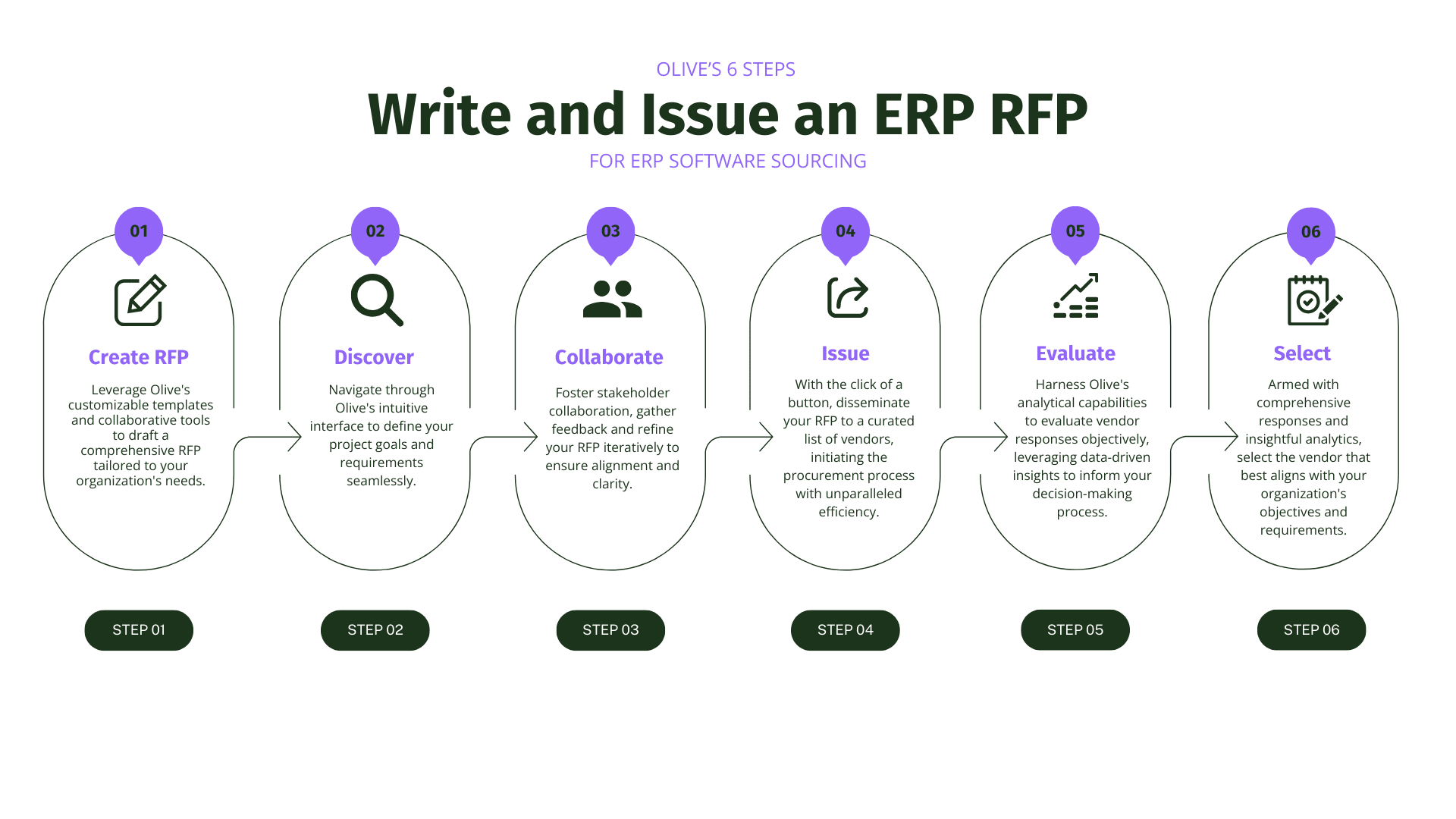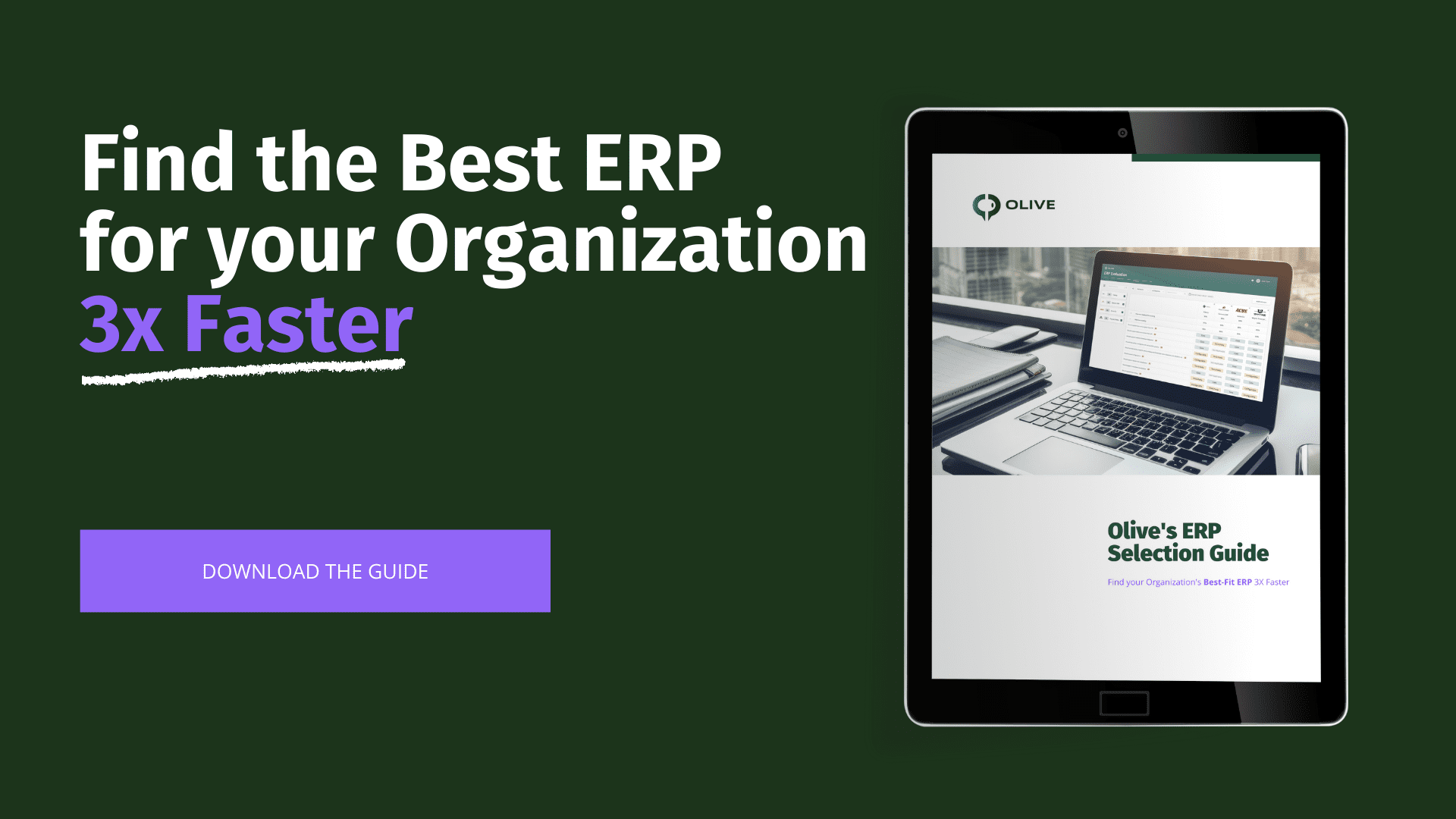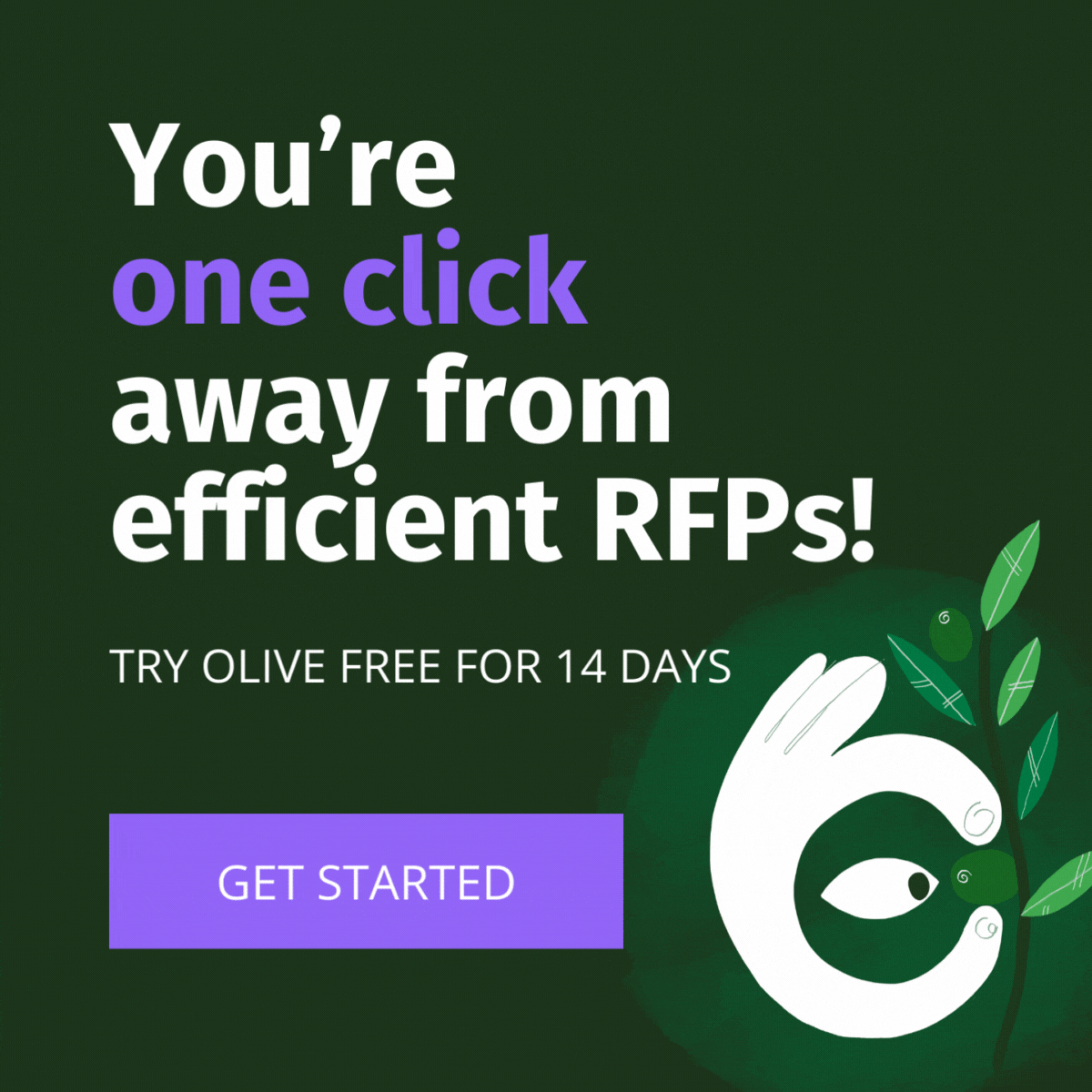How to Build Response-worthy RFPs for Enterprise Resource Planning Software Procurement
Why Write an RFP for ERP?
The importance of crafting an effective Request for Proposal (RFP) for Enterprise Resource Planning (ERP) cannot be overstated, especially when it comes to sourcing the most suitable vendor, on budget for your organization’s needs. Most companies require an RFP for ERP purchases over a certain amount, recognizing the importance of thorough ERP vendor comparison and selection.
At the core of this process lies the challenge of eliciting responses and ensuring that these responses align closely with your organization’s requirements and objectives. Writing an ERP RFP that gets a response increases your organization’s chances of sourcing the best ERP vendors that best fit your business needs.
Additionally, failure to craft a thorough ERP RFP introduces the risk of misalignment between vendor offerings and organizational needs, potentially leading to costly procurement mistakes and suboptimal ERP solutions. Mastering the art of crafting a comprehensive ERP RFP can serve as a powerful antidote, mitigating the risks associated with procurement oversights and ensuring alignment between organizational needs and vendor solutions. Moreover, investing in the RFP process can yield significant returns on investment (ROI) by facilitating informed decision-making, negotiating better terms, and ultimately achieving optimal value for the organization.
What is an ERP RFP?
In the intricate world of ERP software procurement, an RFP stands as a beacon guiding organizations through the labyrinth of vendor selection.
Picture this: You’re an IT leader tasked with the responsibility of spearheading a crucial ERP acquisition initiative. An ERP RFP serves as your compass, navigating you through the vast sea of ERP vendors, solutions, and intricacies inherent to the ERP landscape. It’s your tool for articulating precise requirements, soliciting comprehensive proposals, and ultimately making informed IT decisions that propel your organization forward.
How Do You Write a Good RFP Proposal?
Writing a good RFP proposal involves clearly articulating your organization’s needs in the form of well written requirements, providing comprehensive information to potential vendors, and ensuring the RFP is well-structured and easy to understand. Key elements of a good RFP proposal include:
- Detailed description of requirements
- Clear instructions for vendors
- Transparent selection criteria
- Realistic timelines
Understanding the ERP RFP Process
Yet, amidst the undeniable significance of ERP RFPs, organizations often find themselves grappling with a myriad of challenges when adhering to traditional RFP methods. The labyrinthine nature of the ERP procurement process, compounded by the complexities of ERP evaluation and vendor comparison, often leads to inefficiencies and frustrations.
Mastering the art of crafting a comprehensive ERP RFP can serve as a powerful antidote, mitigating the risks associated with procurement oversights and ensuring alignment between organizational needs and ERP solutions.
How to Write an ERP RFP That Will Get a Response
Embarking on the journey of crafting an RFP for ERP system purchases requires meticulous planning and execution.
1. Define Your Project and Needs
Before penning down a single word of your ERP RFP, it’s imperative to delineate your project’s scope, objectives, and requirements. Start by identifying the problem or need that the ERP solution will address. Outline specific requirements and functionalities essential for achieving your project goals, considering factors like features, integration needs, scalability, and budgetary constraints.
2. Write an Introduction
Your ERP RFP’s introduction sets the stage for vendor engagement, offering a glimpse into your organization’s objectives and the challenges it seeks to overcome. Provide a concise overview of your organization and the project at hand. Clearly state the purpose of issuing the ERP RFP and the objectives you aim to achieve by selecting an ERP vendor. Highlight any challenges or pain points your organization faces that the ERP solution will address.
3. Explain Your Company’s and Project’s History
A brief yet insightful overview of your company’s history and the project at hand can serve as a catalyst for vendor interest and engagement. Give a brief background of your organization, including its mission, values, and industry presence. Outline the history of the project, including any previous attempts to address the problem or implement similar solutions. Highlight key milestones or achievements related to the project to demonstrate your organization’s commitment to its success.
4. Describe Your Project’s Requirements
Detailing your project’s requirements forms the cornerstone of your ERP RFP, laying the groundwork for vendor proposals and evaluations. Detail the specific requirements and functionalities the ERP solution must fulfill to meet your organization’s needs. Then break down the requirements into categories such as technical specifications, functional capabilities, security requirements, and user experience expectations. Include any specific preferences or constraints related to the ERP solution.
5. Explain How Vendors Should Respond to Your ERP RFP
Clarity and consistency are paramount when outlining the structure for vendor responses. Provide clear instructions to vendors on how to structure and format their responses to the ERP RFP. Define the required sections, headings, and content that vendors should include in their proposals. Specify any supporting documents or materials vendors need to submit along with their responses.
6. Outline Your Selection Criteria
Transparent and well-defined selection criteria pave the way for informed decision-making and vendor selection. Define the criteria and metrics you will use to evaluate and compare ERP vendor proposals. Prioritize the selection criteria based on their importance to your organization’s objectives and project success. Include both essential prerequisites and preferred qualifications that vendors should demonstrate in their responses.
7. Note Your Timelines
Timeliness is of the essence in the realm of ERP RFPs, with deadlines and milestones guiding the procurement journey. Establish clear timelines and deadlines for each stage of the ERP RFP process, from issuance to vendor selection. Communicate key milestones, such as the deadline for submitting proposals, the date for announcing the selected ERP vendor, and the project start date. Allow sufficient time for vendors to prepare and submit their proposals.
8. Proofread and Revise Your ERP RFP
The devil lies in the details, and proofreading serves as the final safeguard against oversight and errors. Conduct a thorough proofreading of your ERP RFP to identify and correct any errors or inconsistencies in grammar, spelling, or formatting. Review the content for clarity, coherence, and relevance to ensure it effectively communicates your organization’s needs and expectations. Solicit feedback from stakeholders and colleagues involved in the project. Utilize collaborative features to streamline the review process.
The Olive Approach to Building and Issuing an ERP RFP
At the heart of Olive’s innovative solution lies a commitment to simplifying and streamlining the ERP RFP writing process. Leveraging cutting-edge technology and intuitive design, Olive empowers organizations to transcend the constraints of traditional ERP RFP methods and embrace a future-driven approach to ERP procurement. With Olive’s user-friendly platform at your disposal, crafting an ERP RFP becomes an intuitive and efficient endeavour.
 1. Launch ERP RFP Template in the Olive Platform
1. Launch ERP RFP Template in the Olive Platform
Leverage Olive’s customizable templates and collaborative tools to draft a comprehensive ERP RFP tailored to your organization’s needs.
2. Use AI to Discover requirements and craft your RFP
Navigate through Olive’s intuitive interface to define your project goals and requirements seamlessly.
3. Collaborate
Foster stakeholder collaboration, gather feedback, and refine your ERP RFP iteratively to ensure alignment and clarity.
4. Issue
With the click of a button, disseminate your ERP RFP vendors, initiating the procurement process with unparalleled efficiency.
5. Evaluate
Harness Olive’s analytical capabilities to evaluate ERP vendor responses objectively, leveraging data-driven insights to inform your decision-making process.
6. Select Vendor
Armed with comprehensive proposals and insightful analytics, select the ERP vendor that best aligns with your organization’s objectives and requirements.
Source the Best ERP Solution for Your Business Needs
Sourcing the right ERP system for your organization’s needs can help businesses achieve goals, improve competitive position, and increase profitability. However, relying on hype, biased opinions, or incentivized reviews when sourcing ERP vendors can lead to costly mistakes.
Gartner, G2, and Capterra provide a good starting point by giving you an overview of the top-rated ERP vendors. However, it’s essential to evaluate multiple solutions thoroughly to make an informed decision.
Don’t settle for a subpar ERP solution that will cost you in the long run. With Olive, you can de-risk your decision and make the right choice for your organization. Olive’s AI-driven analysis vendor recommendations make it easy to collaborate with department heads and compare vendors to your unique business needs.
Olive’s ERP RFP Template
What is an RFP Template?
An RFP template is a pre-designed document that outlines the structure and format for writing an RFP. It includes sections for defining project objectives, describing requirements, outlining selection criteria, and specifying timelines. Using an RFP template can help streamline the RFP writing process and ensure consistency across different RFPs.

Launch your Search for the Best ERP with Olive’s ERP RFP Template
Kick-off your organization’s ERP evaluation with Olive’s pre-created project template. Our template is designed to simplify the process, saving you time and ensuring thoroughness. It comes pre-loaded with discovery surveys, standard requirements, user feedback, a list of vendors, and vendor responses to requirements.
Olive users take less time to source, evaluate, and implement ERP solutions. Increased collaboration amongst key stakeholders reduces delays caused by miscommunication, outdated processes, conflicting priorities, and lack of alignment.
Kick-off your organization’s ERP evaluation with Olive’s pre-created ERP project template. The project is pre-loaded with discovery surveys, standard requirements, user feedback, a list of vendors, and vendor responses to requirements. Olive allows stakeholders to review vendor responses for each requirement and then score those responses based on how well they meet their needs. All stakeholder responses are calculated automatically and presented as an overall score at the requirement, section, and solution level.
In Olive, ERP vendor scores are automatically calculated. Compare vendors side by side based on specific requirements. Dynamic auto calculations ensure that scores continuously update as stakeholders evaluate vendor responses. The platform also offers the flexibility to assign different weights to various sections or departments when calculating vendor scores. This data-driven approach enables unbiased decision-making, free from any bias.
Ready to find the best ERP solution for your organization? Take the time to do it right, check out Olive’s ERP RFP template by signing up for a 14 day free trial. And for more expert guidance, download Olive’s ERP Selection Guide.


 1. Launch ERP RFP Template in the Olive Platform
1. Launch ERP RFP Template in the Olive Platform




